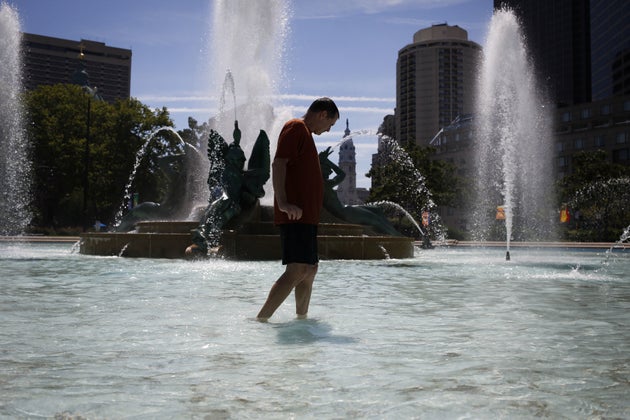
Unless we act fast to curb climate change, scorching heat will become commonplace, scientists say...
Sweltering heat waves like the ones plaguing the Midwest and Northeast in recent days will become typical summer weather if climate change continues its course, scientists warn.
Temperatures have been in the mid-to-high 90s across the northeast since Thursday, plaguing the New York tri-state area, Philadelphia, Boston, Washington, D.C. and beyond. They follow a heat wave that struck the Midwest late last week, slamming Chicago with temperatures in the high 90s that felt more like 105 degrees.
And this comes just a month after triple-digit temperatures scorched the Southwest, breaking temperature records across Arizona and killing four hikers. At this rate, some experts are already saying there’s a 99 percent chance that 2016 will beat out 2015 as the hottest year on record.
Unless we slow down our fossil fuel consumption, we should get used to summers like these, climate scientists say.
“If we continue with business-as-usual burning of fossil fuels, and warm the planet by [3 degrees Celsius] by the end of this century, then what we today call ‘extreme heat’ we will instead call ‘mid-summer,’” Michael Mann, a leading climate scientist and professor of meteorology at Penn State University, told The Huffington Post.
Kevin Trenberth, a distinguished senior scientist at the National Center for Atmospheric Research, agreed that severe heat could be summer’s new normal. He pointed to findings in the 2014 National Climate assessment that project that by the end of the 21st century, what used to be “once-in-20-year extreme heat days” in the U.S. will occur every two to three years.
“In other words, what now seems like an extremely hot day will become commonplace,” the report said.
As an example, Mann pointed to Harrisburg, Pennsylvania. During the late 20th century the city averaged less than one day a year with temperatures over 100 degrees. But “by the end of this century, given business-as-usual fossil fuel burning,” Mann wrote, “the models tell us we’ll see more than 30 days (yes, a solid month) a year of 100F+ days.”
That type of consistent heat may render some climates unlivable.
“Eventually the elevated heat becomes so pervasive and persistent that human habitation becomes difficult,” Mann said. “A number of studies have shown that the tropics will eventually become unlivable to human civilization, if we continue on the course that we’re on.”
But before humans are confronted with such drastic consequences, wildlife and landscapes less equipped to adjust will suffer first.
“What can not adapt is the ecosystems, the plants whether in nature, in forests or farmed,” Trenberth wrote to HuffPost. As for animals in the wild, “[t]hey lose food, the water evaporates and so becomes short in supply and maybe tainted, and they are subjected to increased wild fire risk. But bugs tend to love it!”
Also on HuffPost
Climate change seen from around the world...
source: http://www.huffingtonpost.com/
original story HERE
To help do something about the climate change and global warming emergency, click here.
Sign up for our free Global Warming Blog by clicking here. (In your email, you will receive critical news, research, and the warning signs for the next global warming disaster.)
To share this blog post: Go to the Share button to the left below.

Be the first to comment
Sign in with